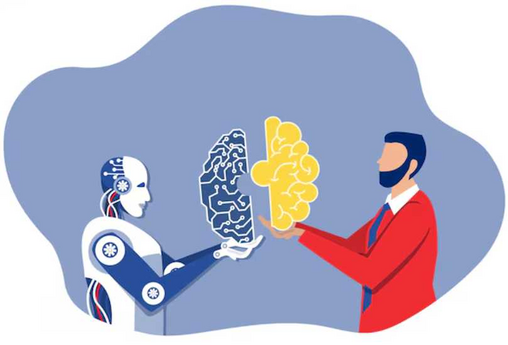Every writer knows that the end of an essay or article can feel like the hardest part. You may have built strong points, researched deeply, and crafted paragraphs that make sense, but when it comes time to wrap things up, the words do not come easily. That is where the Conclusion Generator has entered the picture. Instead of struggling to craft a memorable ending, writers now have a tool that works like a fast-forward button, pulling all the threads together in seconds.
Why Endings Matter More Than Ever
In writing, the ending is not just an afterthought. It is the piece that readers remember. Studies in communication show that the final words of an essay or speech carry a weight disproportionate to their length. The conclusion is where you show clarity, resolve, and direction. Without it, an argument feels unfinished. The challenge has always been that endings require a different kind of focus. While introductions are about setting the stage and body paragraphs are about proving points, conclusions must lift the entire structure into a single lasting message.
If you look at the history of the essay, you can see how form and tradition have shaped the way endings are written. From the reflective closings of Montaigne’s original works to the persuasive finish of modern academic papers, conclusions have always been expected to do more than summarize. They must inspire confidence and show mastery.
The Rise of the Conclusion Generator
AI tools have grown in leaps, moving from simple sentence builders to systems that can understand structure, tone, and flow. Among these, the Conclusion Generator is one of the most practical breakthroughs. It does not just recycle earlier sentences. Instead, it uses models trained on thousands of well-written documents to build a closing that highlights the core argument, balances tone, and gives the impression of completeness.
This technology has already made its way into platforms like MyEssayWriter.ai, where it stands alongside brainstorming engines, paraphrasers, and story generators. The appeal is obvious: a student facing a tight deadline can generate a draft conclusion within seconds, then refine it to fit their personal style. A professional drafting reports can finish more quickly without losing clarity.

Speed as the New Standard
We live in an era where speed has become a form of currency. Deadlines are shorter, readers scroll faster, and attention spans are more fragmented than ever. A Conclusion Generator is built for this reality. Instead of spending hours trying to polish the final paragraphs, you press a button and move forward.
It is important to note that speed does not mean superficiality. In fact, by giving writers a solid foundation, AI allows them to spend more energy on deeper insights and stronger arguments. The AI helps cut away the time sink of repetitive phrasing and structural worries. Humans then use that freed-up time for creative and critical thought.
This balance is why the fast-forward button metaphor fits so well. It is not skipping over quality. It is removing friction from the process.
From Gimmick to Essential Tool
At first, many saw Conclusion Generators as a novelty. They were lumped in with the earliest AI writing experiments that produced stiff or clumsy results. But the pace of improvement has been astonishing. Just a few years ago, outputs felt generic. Today, conclusions are adaptive, often matching the rhythm and tone of the rest of the essay.
That shift shows how AI is moving from an optional extra to an essential tool. Just as spell check and grammar correction once felt new but are now taken for granted, Conclusion Generators are on their way to becoming part of the standard writing workflow. In a few years, it may be strange to imagine writing without one.
A Human Touch on Machine Drafts
Of course, no matter how smooth the technology, the human element remains vital. A generated conclusion gives you a framework, but the emotional resonance must still come from the writer. Readers connect to authenticity, and while machines can mimic patterns, they cannot recreate personal experience. That is why platforms like MyEssayWriter.ai encourage users to treat generated conclusions as starting points. The polish, the fine-tuning, the voice that is still your job.
A recent review on Kreafolk echoed this sentiment, highlighting how MyEssayWriter.AI integrates tools that help writers without trying to erase them. The Conclusion Generator is part of a broader ecosystem designed to support, not replace, creativity.
Education and Changing Standards
Nowhere is this change felt more strongly than in education. Teachers want students to learn how to argue, analyze, and synthesize ideas. Yet many students stumble at the end, where they must wrap their work in a way that feels complete. A Conclusion Generator does not mean skipping learning. It means supporting students so they can focus on the higher-level thinking that truly matters.
If you compare this shift with the history of artificial intelligence, it fits a pattern. Technologies that start as controversial often become indispensable once their value is understood. Calculators in math, search engines in research, and now AI in writing all follow the same path. At first, they seem to weaken skills. In reality, they change what skills matter most.
The Future of Fast Endings
Looking ahead, the possibilities for Conclusion Generators are vast. Future systems may analyze not just the text of your essay but your audience, your purpose, even your emotional tone. They may offer multiple variations, giving you a reflective ending for one draft and a persuasive push for another. In time, you may have an AI partner that learns your voice so deeply that its conclusions sound indistinguishable from your own.
This future is both exciting and challenging. It will raise questions of authenticity and originality. But it will also offer opportunities for more people to express themselves effectively. If the hardest part of writing becomes easier, more voices will have the confidence to share their ideas.
Final Thoughts
Writing is not just about beginnings or middles. It is about endings that resonate. The rise of the Conclusion Generator marks a moment where technology is stepping into one of the most critical parts of communication. By acting like a fast-forward button, it helps writers close arguments with speed and clarity, leaving more room for human creativity to shine.
Tools like MyEssayWriter.ai are showing that the future of writing will not be slower or harder but faster, smarter, and more collaborative. The machine provides the scaffolding, the human provides the heart. Together, they create conclusions that feel complete, authentic, and ready for the future.
Read other helpful blogs:
Humanizer Adoption Rose 70% in September 2025
Unstoppable Momentum The Data Proves MyEssayWriter AI Left All Rivals Behind in Oct 2025
















